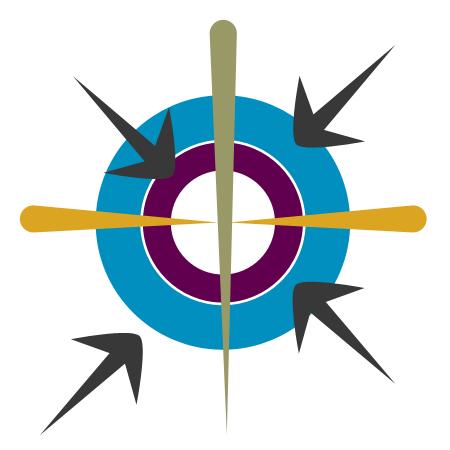MEDIA
The fact is that there is no party of peace in either India or Pakistan, not even one that comes close to such a position. In fact, almost every party in opposition accuses the ruling party of having sold out on Kashmir. Does that not suggest that the political parties consider the voters to be hawkish on conflict?
It is often asserted that the majority of people in India and Pakistan desire peace. I have my doubts. Let me explain why.
I got to thinking of this issue when, in response to an earlier column, a reader suggested that it would be instructive to calculate the costs of confrontational foreign policies. "My own back-of-the-napkin analysis tells me that the amount [for Pakistan] would be around $200 billion over the past 57 years. This in turn directly affects the GDP which could have been double of what it is today." The reader felt that such an analysis would "wake people up and make them associate a cost with bad policies."
Let us reserve judgment on whether the policies were good or bad. Irrespective of that judgment, what all these conflicts have cost in terms of social development is a valid question. In other words, do people really know the magnitude of the economic sacrifice they are being asked to make for attaining political objectives?
I duly sent a query to about twenty economists and other academics enquiring if they were aware of any work along these lines. It turns out that the very task the reader was asking for had been completed earlier this year and the findings released in the form of a book (Cost of Conflict Between India and Pakistan, Strategic Foresight Group, Mumbai, 2004).
A summary of the book is available online and presents an estimate of the magnitudes involved. For example, among other claims, it asserts that "the Siachen conflict alone will cost India Rs 7,200 crores and Pakistan Rs 1,800 crores in the next five years;" that "India and Pakistan have the potential to enjoy a trade of about $1 billion if the hostile environment continues and $13.25 billion if peace prevails on a cumulative basis for the next five years (2004-08) resulting in an opportunity loss of $12 billion;" and that "Kashmir lost 27 million tourists from 1989-02 leading to a tourism revenue loss of Rs 16,500 crores."
I do not know if these numbers are right or wrong since I have not read the report as yet. But it is safe to say that the numbers are likely to be very large. This kind of sustained conflict cannot be conducted on the cheap. I was not unduly surprised by the asserted magnitude of the costs.
What did surprise me was the fact that such a report had not made more waves. Of all the people I had contacted only one was aware of the existence of the study and he was one of those who had contributed to the research. My reader had thought that such an analysis would "wake people up". On the contrary, the report had died virtually without a trace. I could see from the website that the release was "covered" in many newspaper editorials. In retrospect, I too recalled coming across a news item in the Daily Times. So did my reader who wrote: "Thanks for the information on the Strategic Foresight link. Now I do remember seeing a mention of this in the Indian or the Pakistani media some time ago." But the news had not registered, fading away from memory like most of the news items in newspapers. Why?
And that brings me to the subject of this article. The one possible reason I can think of is that the oft-asserted existence of a very large number of people desiring peace is a myth. Had that been the case surely there would have been a "Peace" party that would have run with the report. It would have made political use of it to canvass support, to campaign on the platform of peace and development, and to have contested any subsequent elections on that agenda. But the fact is that there is no party of peace in either India or Pakistan, not even one that comes close to such a position. In fact, almost every party in opposition accuses the ruling party of having sold out on Kashmir. Does that not suggest that the political parties consider the voters to be hawkish on conflict?
This raises some disturbing thoughts and challenges our complacent presumptions about what people want and how they behave. Is there an anomaly and, if so, how can we explain it? I read a very perceptive essay on the forthcoming US elections by a young Pakistani-American high school student. Comparing the strategies of the Right and Left he quoted William Reich's explanation of how the fascists took power in Germany. Reich wrote, "While we presented the masses with superb historical analyses and economic treatises on the contradictions of imperialism, Hitler stirred the deepest roots of their emotional being." Do voters vote their emotions rather than their pocketbooks? If so, what lies at the deepest roots of the emotional being of the Indian and Pakistani voter?
After learning that the kind of research he was looking for had already been completed and forgotten, my reader still remains optimistic: "I think it would still be very worthwhile for an economist to dig through the report and write an easily understandable column that gives the reader the total 'cost of conflict' in dollar terms and per capita GDP loss." I am not so sanguine. I think in this case we are barking up the wrong tree.
Of course, there is more than one explanation for every observation. Therein lies the fascination of the social sciences. I shall try and offer an alternative explanation in a future column because the one outlined above does not appeal to me. In the meanwhile, I would appreciate if readers can help by identifying the flaws in the logic of the argument presented in this article.
For the book on the cost of conflict, see :
Cost of Conflict between India and Pakistan, 2004






